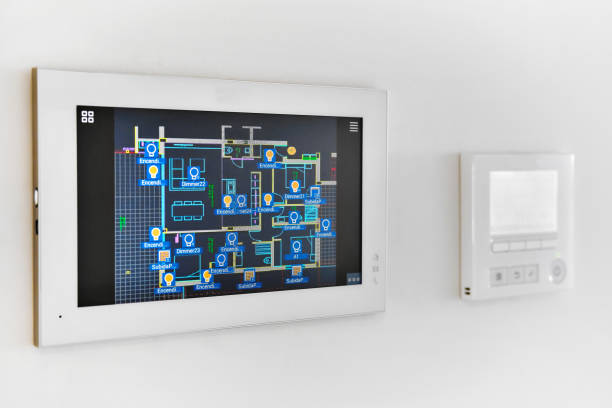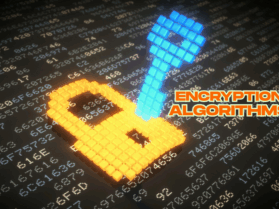Technological advancement is an everyday phenomenon. Businesses ought to be on a mission to reap the benefits of the dynamic digital sphere. However, all this considered, security stands as the topmost priority. Organizations across the globe are constantly striving to safeguard their digital assets from the ever-evolving tactics of malicious actors. The security approach is an effective and increasingly important concept in IT. It involves the machine-based execution of security actions, emerging as a game-changer in this arena.
Security automation identifies the threats and prioritizes taking the best actions to mitigate them as they occur. Here in this article, we will dive deep into the world of security automation, exploring its benefits, applications, and myriad of tools that enable its implementation.
Furthermore, we will discuss the best practices organizations can adopt to ensure the seamless integration of security automation into their cybersecurity strategy.
Security Automation: A Necessity
As technology advances, so do the tactics and strategies of cybercriminals. Considering the growing number and sophistication of cyber threats, a prominent concept “Zero Trust” has come to light. It is basically a robust security model that focuses on the principle of not trusting any of the entity that lies inside or outside the organization’s network by default. Alternatively, it facilitates the verification and authorization of access based on strict identity and access management.
As it's said, every coin has two sides. While Zero Trust is a highly effective approach to security, it comes with complexities. The implementation of granular approval and denial of access requests based on role-based access (RBAC) policies introduces a level of overhead costs. This is where the role of security automation emerges and becomes apparent.
Why Security Automation is Important?
Below listed pointers below will provide a clear idea of why security automation is important.
Reducing the Burden on Security Teams
Security automation helps to ease the pressure on security teams. One of its benefits is the ability to automate arduous and repetitive security tasks. With the automation of these tasks, organizations can reduce the burden on their in-house cybersecurity teams. As a result, they can focus more time on high-priority threats and strategic initiatives.
Guaranteeing Compliance with Regulations
In today's complex and dynamic regulatory environment, maintaining compliance with cybersecurity regulations and industry standards is a constant challenge. Managing security compliance requirements and individual certifications can be a complex process, especially given the changing industry and legal requirements.
Security automation simplifies compliance by automating tasks related to adherence to regulations. This ensures that organizations are better prepared to meet their compliance requirements.
Improved Confidence in Security Posture
Another important reason to include security automation is to boost confidence in an organization’s security posture. However, human error is an intrinsic risk in manual security processes. By automating security tasks, the chance of missing potential threats due to human error is reduced substantially. Furthermore, automation provides a reliable and consistent mechanism for threat detection and response.
The Key Advantages of Security Automation
The implementation of security automation can have a drastic impact on the overall cybersecurity posture and operational efficiency of the organization. Here are a few key advantages that stand out:
1. Rapid Threat Detection:
The key benefit of security automation is rapid response. Security Operations Centers (SOCs) are flooded with a constant stream of security alerts. These alerts can vary in severity, and manually investigating each one is a daunting task.
Security automation offers the capability to prioritize alerts and identify genuine security incidents automatically. This super-fast acceleration in threat detection enables organizations to respond promptly to critical events.
2. Higher Productivity:
Many SOCs face daunting challenges related to overworked analysts and understaffing. With the help of offloading the manual tasks to automated processes, security analysts can easily focus on the things that matter the most.
Automation also enables Level 1 analysts to handle a broader range of tasks without the need for escalation to more experienced analysts. This streamlined approach to security operations significantly improves productivity.
3. Faster Mitigation
When an incident occurs, immediate action is not an option but a necessity. Automated tools can execute the predefined security books in response to incidents. In short, the threats can be eliminated without the need of humans. This rapid response capability is critical in reducing the impact of security incidents.
4. Standardization of Security Processes
Implementation of security automation and playbooks needs a standard taxonomy of security tools and processes within the organization. This standardization not only facilitates automated processes but also assists in clearly defining the manual processes. Consistency in the application of security processes is vital for ensuring security across the entire organization.
Common Use Cases of Security Automation

Automatic Endpoint Scans
Performing endpoint scans is a top practice when potential security incidents arise. These scans are used to probe affected endpoints to determine the presence and extent of a breach that occurred. Traditionally, manual scanning can be slow and often requires the input of multiple stakeholders.
With the help of automation, the process of endpoint scanning is streamlined, making it more efficient, especially when dealing with many hosts. The automated scanners eliminate the need to write code to scan configurations, allowing teams to identify endpoint security issues quickly.
Automatic Testing Code Generation
One of the most crucial phases in the era of Continuous Integration/Continuous Deployment (CI/CD) is testing. While traditional CI/CD pipelines aim to focus on application reliability and performance testing, they often take security testing for granted. Security testing is equally vital but tends to be less urgent than performance testing.
Automatically generating code for security tests bridges this gap. It integrates security seamlessly into the CI/CD process by allowing test engineering teams to specify the security risks that tests should cover. Automated code generation streamlines the process of running security tests, making security testing significantly easier and more accessible.
Sharing the Security Automation Rule Updates for New Environments
Organizations move to new environments easily; for example, from one cloud provider to another. In these scenarios, there arises a need to update the security automation rules to keep up with the changes. This process involves collaboration between the developers and security analysts and can be somehow tedious and complicated process.
The good news is security automation tools that can automatically generate security codes offer a robust solution. While some manual adjustments may still be necessary, these automated updates handle a significant portion of the work involved in securing the new environment.
Different Types of Security Automation Tools
There exist different security automation tools that play a pivotal role in enabling security automation and making it a success:
Robotic Process Automation (RPA)
The first and foremost is the RPA technology. It is specifically designed to automate low-level processes that don’t need complex analysis. RPA services employ “robots” software that basically uses the mouse and keyboard commands to automate operations on a virtualized system.
Another thing is, that RPA can efficiently perform tasks such as scanning for vulnerabilities, running monitoring tools and saving results, and basic threat mitigation, such as adding a firewall rule to block a malicious IP. Moreover, it's important to note that RPA is limited to rudimentary tasks and cannot integrate with complex security tools or apply intricate reasoning.
Extended Detection and Response (XDR)
XDR solutions generally depict the evolution of endpoint detection and response (EDR) and network detection and response (NDR). XDR combines data from a range of layers of the security environment, which includes the cloud systems endpoints, and networks. This comprehensive data compilation allows XDR to identify evasive attacks that may hide between security layers and silos.
XDR is known for its automation capabilities, including machine learning-based detection, centralized user interfaces for reviewing alerts, correlation of related alerts, managing automated actions, and response orchestration. In addition, XDR's machine learning algorithms become more effective at detecting a broader range of attacks over time.
Security Orchestration, Automation and Response (SOAR)
SOAR systems are 360-degree solutions that enable organizations to collect data about security threats and respond to incidents immediately without the need for humans. This type of security automation was first taken into effect by Gartner and encompasses any tool that can help define, prioritize, standardize, and automate incident response functions.
SOAR platforms have the capability of orchestrating operations across different security tools, supporting automated security workflows, policy execution, and report automation. They are mainly used for automated vulnerability management and remediation.
A Typical Security Automation Process
While the different security tools and systems operate in their unique ways, there is a proper process that is followed by an automated security system. In many cases, an automated security system will perform one or more of these steps, with human analysts handling the remaining tasks:
Competing Investigative Steps of Human Security Analysts
Receiving Alerts: The automated system receives alerts from security tools, which include a wide range of data such as logs, alerts, and threat intelligence.
Correlation: The automated system correlates with threat intelligence or other data, attempting to understand the context and potential impact of the incident.
Determining Genuine Incidents: Based on the correlation and analysis, the system decides whether an alert is a real security incident or a false positive.
Determining Responsive Action
Identifying Incident Type: The system identifies whether the type of security incident taking place, could range from a simple alert to a full-blown breach.
Choosing Automated Process: Based on the incident type, the system selects the most appropriate automated process or security playbook to address the incident.
Containment and Eradication
Automated Activities: The system performs a series of automated activities, which could involve using security tools or other IT systems. These activities are aimed at ensuring that the threat cannot spread further and, ideally, eradicating it from affected systems.
Closing the Ticket or Escalation
Here’s how you can close the ticket or escalate it with automated actions.
Evaluation of Automated Actions:
The system closely evaluates the success of its automated actions in mitigating threats and attacks. It analyzes whether the taken actions were effective and drove results in the context of the incident.
Escalation if Necessary:
Even after the automation process, if in any case, human intervention is necessary, the system can escalate the incidents to human analysts smoothly. This escalation includes providing specific information about the proceeding incident.
Closure of Tickets:
After all the attempts, if the automated actions have successfully mitigated the threat and if no intervention is required, the system can proceed to close the ticket. This closure includes providing a comprehensive report of all the activities performed, including the threats discovered and the actions performed.
Know the Best Practices for Security Automation

As organizations are shifting towards implementing security automation, several best practices ensure smooth and steady integration.
Give Automation First Priority
Identify the security events happening frequently and those consuming the most time during investigation and resolution. Focus on the use cases where security automation can provide and help in achieving value-based organizational goals.
Start with Manual Books
Initially, you can begin the automation process by creating manual books that enlist the steps, best practices, and processes you as an individual or team can use to address the security concerns. Make sure that the teams follow a proper process whenever an incident occurs. Find out the most time-consuming and repetitive processes, as these can serve as the foundation for the first automated playbooks.
Embrace Automation Gradually
It is important to understand that not all security tasks can be automated simultaneously. Start where automation makes all the sense, has a high likelihood of succeeding, or can bring immediate value. By adopting automation in a gradual and controlled manner, you can monitor progress, assess the results, and make adjustments as required.
Educate Your Staff
Educating and training are the prime components of a successful security automation strategy. Make sure to train your staff on how to use the automation tools effectively. Training should not only include how to set up and operate automated processes but also how to escalate easily when a human workforce is necessary. Analysts must know how to receive tasks from automated security systems, understand the data they receive, and effectively continue handling the incident.
Understanding Security Automation with Cynet XDR
Cynet 360 represents a groundbreaking approach to security automation. It is the world's first Autonomous Breach Protection platform that natively integrates the endpoint, network, and user attack prevention and detection of XDR with the automated investigation and remediation capabilities of SOAR. This is further fortified by a 24/7 world-class Managed Detection and Response (MDR) service.
- XDR Layer: End-to-End Prevention & Detection
- Endpoint Protection: Offers multilayered protection to keep away from threats, malware, ransomware, and more.
- Network Protection: Providing security at the network level and defending the scanning attacks, Man-in-the-Middle (MITM) attacks, lateral movement, and data exfiltration.
- User Protection: Predefine the behavior rules coupled with dynamic behavior profiling to detect malicious anomalies.
- Easy Deception: An increasingly wide network, user and A wide array of networks, users, and files allure advanced attackers to reveal their hidden presence.
- SOAR (Security, Orchestration, Automation, and Response) Layer: Response Automation
- Investigation: Facilitating automated root cause and impact analysis.
- Findings: Providing actionable results on the origin of the attack and its affected entities.
- Remediation: Eliminating malicious activities, presence and infrastructure across user, network and endpoint attacks.
- Visualization: Intuitive flow layout of the attack and the automated response flow.
- MDR Layer: Expert Monitoring and Oversight
- Real-Time Alert Monitoring: MDR aids as a first line of defense, countering all incoming abnormalities and suspicious activities. It prioritizes and notifies the customers about all critical events.
- Attack Investigation & Analysis: Offering a comprehensive detailed report on the attacks that target and aim to exploit the customer.
- Proactive Threat Hunting: Searching for malicious artifacts and Indicators of Compromise (IoC) within the customer's environment.
- Incident Response Guidance: In the event of security incidents, MDR provides remote assistance in the isolation and removal of malicious infrastructure, presence, and activity.
- Simple Deployment: Cynet 360, an advanced threat detection and response platform can be easily deployed across thousands of endpoints in less than two hours. It can be used to immediately uncover advanced threats and then perform automatic or manual remediation, destroy malicious activities, and reduce the damage caused by cyber-attacks.
Wrapping it Up
Security automation is a rapidly transforming approach that empowers organizations to proactively defend against cyber threats. By employing the right tools and practices in place, organizations can not only level up their security posture but also maximize the efficiency and productivity of their security operations. One of the prime examples is Cynet XDR, which offers a comprehensive approach to security approach that drives exceptional results. As the security-related challenges continue to evolve, security automation acts as a vital tool to protect digital assets and maintain a secure digital experience.
Read More:





